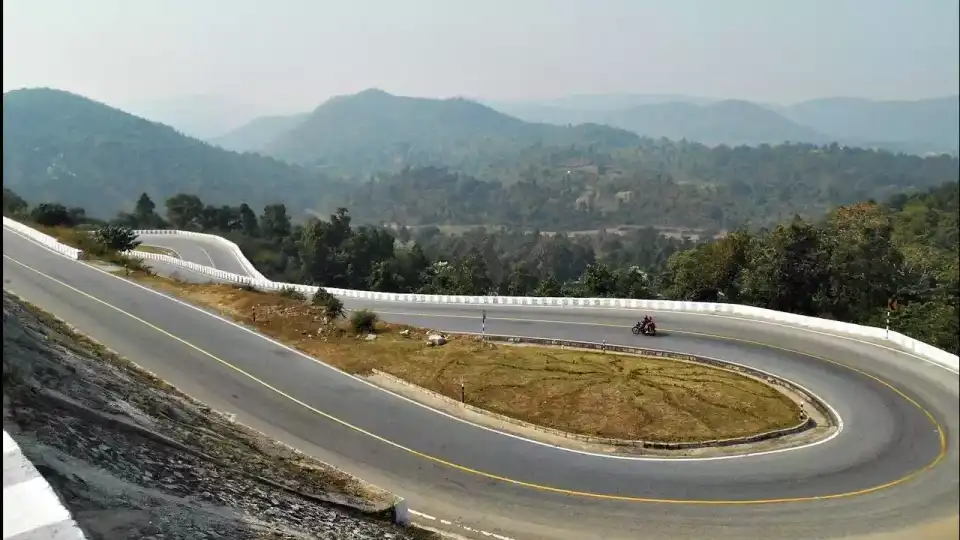Discovering Koderma: A Comprehensive Guide to the District's Heritage and Charm
Introduction
Koderma, a district in the Indian state of Jharkhand, is renowned for its rich cultural heritage, diverse geography, and significant historical background. Situated in the Chota Nagpur Plateau, Koderma is not only famous for its picturesque landscapes but also for being the mica capital of India. This article delves into various facets of Koderma, offering an in-depth look at its demography, culture, geography, cuisines, history, notable figures, and administration.
Geographical Landscape
Koderma district, located at approximately 24.47°N latitude and 85.60°E longitude, spans an area of around 1,506 square kilometers. It is bordered by the districts of Nawada and Giridih. The region's topography is characterized by its hilly terrain, interspersed with forests and rivers, making it a haven for nature enthusiasts.
Major Rivers and Natural Resources
The district is traversed by several rivers, with Barakar and Sakri being the most significant. These rivers not only enhance the scenic beauty of the area but also play a crucial role in agriculture and daily life. Koderma is famously rich in mica deposits, contributing significantly to the local economy and earning it the title of "Mica Capital of India."
Demography
As of the latest census, Koderma has a population of approximately 717,169. The district exhibits a diverse demographic composition with a mix of various ethnic groups, languages, and religions. The literacy rate stands at around 66%, reflecting the emphasis on education within the community.
Population Distribution
- Urban Population: Approximately 25%
- Rural Population: Approximately 75%
- Gender Ratio: 1000 males to 940 females
Cultural Heritage
Koderma's cultural landscape is vibrant, with a tapestry of traditions, festivals, and art forms. The district is home to various tribal communities, each contributing to the rich cultural mosaic of the region.
Festivals and Traditions
The people of Koderma celebrate numerous festivals with great enthusiasm. Some of the most prominent include:
- Diwali: The festival of lights, celebrated with great fervor.
- Holi: Known as the festival of colors, it marks the arrival of spring.
- Chhath Puja: A significant festival dedicated to the Sun God, celebrated with elaborate rituals.
Traditional Arts and Crafts
The district is known for its traditional crafts, especially those made from mica. Artisans create intricate designs and functional items from this locally abundant resource, showcasing their craftsmanship and creativity.
Historical Background
Koderma has a rich historical tapestry, with evidence of human settlement dating back to ancient times. It has been a site of significant historical events and movements, particularly during India's struggle for independence.
Key Historical Events
- Colonial Era: The British extensively mined mica in Koderma, making it a vital center for the mica trade.
- Freedom Struggle: The district played a role in the freedom movement, with many local leaders actively participating in the fight against British rule.
Prominent Personalities
Koderma has been home to several notable figures who have made significant contributions in various fields.
Notable Figures
- Madan Mohan Jha: A prominent political leader known for his work in social welfare and development.
- Dr. Jai Prakash Narayan: A renowned academic and social activist who has contributed to educational reforms in the region.
Administration
The administrative structure of Koderma is well-organized, ensuring effective governance and development.
Administrative Divisions
Koderma is divided into several administrative blocks for better management and governance:
- Koderma Block: The central administrative region.
- Jhumri Telaiya: Known for its urban development and commercial activities.
- Satgawan: A predominantly rural area with a focus on agriculture.
Governance
The district administration is headed by the Deputy Commissioner, who oversees various departments such as health, education, and infrastructure development. The local governance is supported by elected representatives at the panchayat level.
Economic Landscape
The economy of Koderma is primarily driven by agriculture, mining, and small-scale industries. The presence of rich mica deposits has fostered the growth of related industries, providing employment opportunities to the local population.
Agricultural Practices
Agriculture remains the backbone of Koderma's economy, with a majority of the population engaged in farming. The primary crops include:
- Rice: The staple food crop.
- Maize: Widely cultivated in the region.
- Pulses: An essential part of the agricultural output.
Mining and Industry
Koderma's mining industry, particularly mica mining, has a significant impact on the local economy. The district also hosts several small-scale industries, contributing to its economic diversity and resilience.
Culinary Delights
Koderma's cuisine is a reflection of its cultural diversity, offering a variety of flavors and dishes that cater to different palates.
Traditional Dishes
Some of the traditional dishes that are a must-try include:
- Litti Chokha: A popular dish made from wheat and roasted vegetables.
- Dhuska: A savory fried bread made from rice and lentils.
- Pua: A sweet dish made from rice flour and jaggery, often served during festivals.
Local Delicacies
The district also boasts unique local delicacies, influenced by tribal traditions and the availability of local ingredients.
Tourism and Attractions
Koderma offers numerous attractions for tourists, from natural landscapes to historical sites.
Major Tourist Spots
- Tilaiya Dam: A picturesque spot ideal for picnics and boating.
- Madhuban: Known for its Jain temples and serene environment.
- Satagawan Petro Falls: A stunning waterfall that attracts nature lovers.
Adventure and Nature
The hilly terrain and dense forests of Koderma provide ample opportunities for trekking, bird watching, and exploring the rich biodiversity of the region.
Conclusion
Koderma district, with its unique blend of natural beauty, cultural richness, and historical significance, stands as a testament to the diverse heritage of Jharkhand. From its scenic rivers and lush forests to its vibrant festivals and traditional crafts, Koderma offers a compelling glimpse into the heart of India's tribal and rural life. Whether you're an adventurer, a history enthusiast, or a culinary explorer, Koderma promises an enriching experience that captures the essence of its enduring charm.
